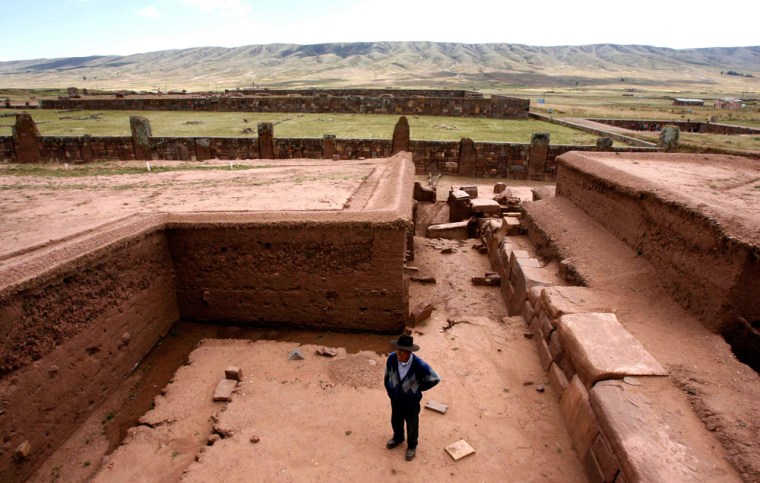Archaeologists have uncovered the 1,300-year-old skeleton of a ruler or priest of the ancient Tiwanaku civilization, together with precious jewels inside a much-looted pyramid in western Bolivia.
The bones are “in very good condition” and belong to either ”a ruler or a priest,” Roger Angel Cossio, the Bolivian archaeologist who made the discovery, told Reuters on Wednesday.
He said the tomb — containing a diadem and a fist-sized carved pendant of solid gold — survived centuries of looting by Spanish invaders and unscrupulous raiders who depleted Tiwanaku of many precious treasures.
“After so much looting ... miraculously this has stayed to tell us the history,” Cossio said. “It’s a complete body... next to it are jewels, offerings and a llama.”
The llama may have been a status symbol or a source of food for the journey to the afterlife, archaeologists said.
The corpse was found in a niche carved inside the 15-yard-high (15-meter-high) Akapana pyramid, which was built around 1200 B.C. and is described by experts as one of the biggest pre-Columbian constructions in South America.
At its peak, the city of Tiwanaku stretched over 1,480 acres (600 hectares) and had a population of more than 100,000, according to chief archaeologist Javier Escalante, who presented the findings on Wednesday at a news conference near the pyramid.

The Tiwanaku civilization spread throughout southwestern Bolivia and parts of neighboring Peru, Argentina and Chile from around 1500 B.C. to A.D. 1200.
Although experts still have to do carbon dating to determine the age of the remains, archaeologists estimate they were buried 1,300 years ago, during the decline of the Tiwanaku empire.
Cossio believes the remains belong to someone of importance in the Tiwanaku society.
“Not just anyone would be buried under the Akapana pyramid,” he said.
In the 1900s, workers used the base of the pyramid as a quarry from which they extracted stones to build a rail line connecting the neighboring town of Guaqui with La Paz.